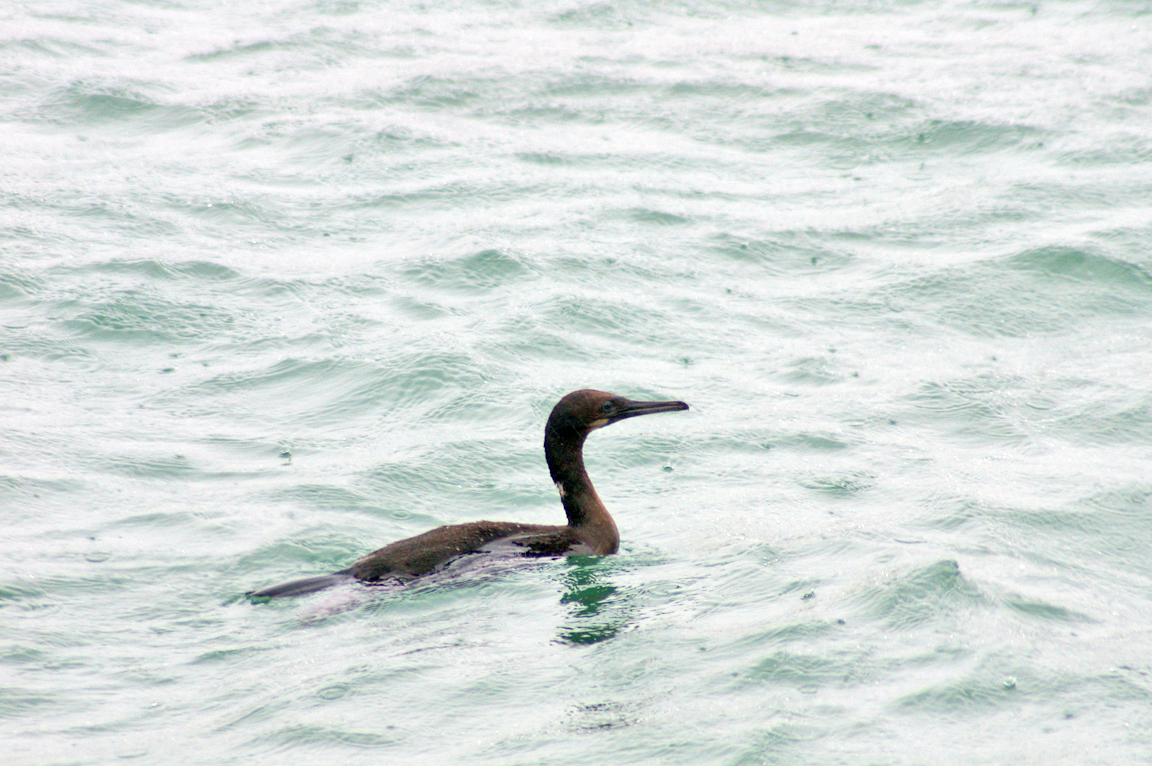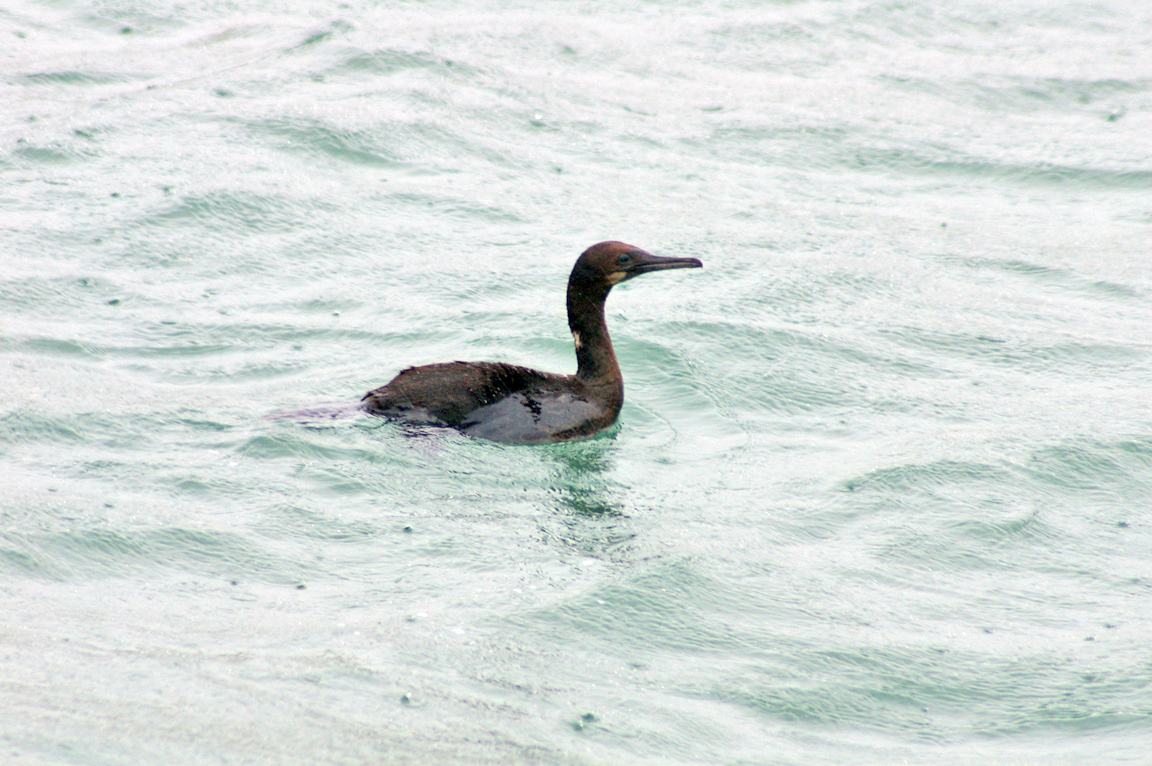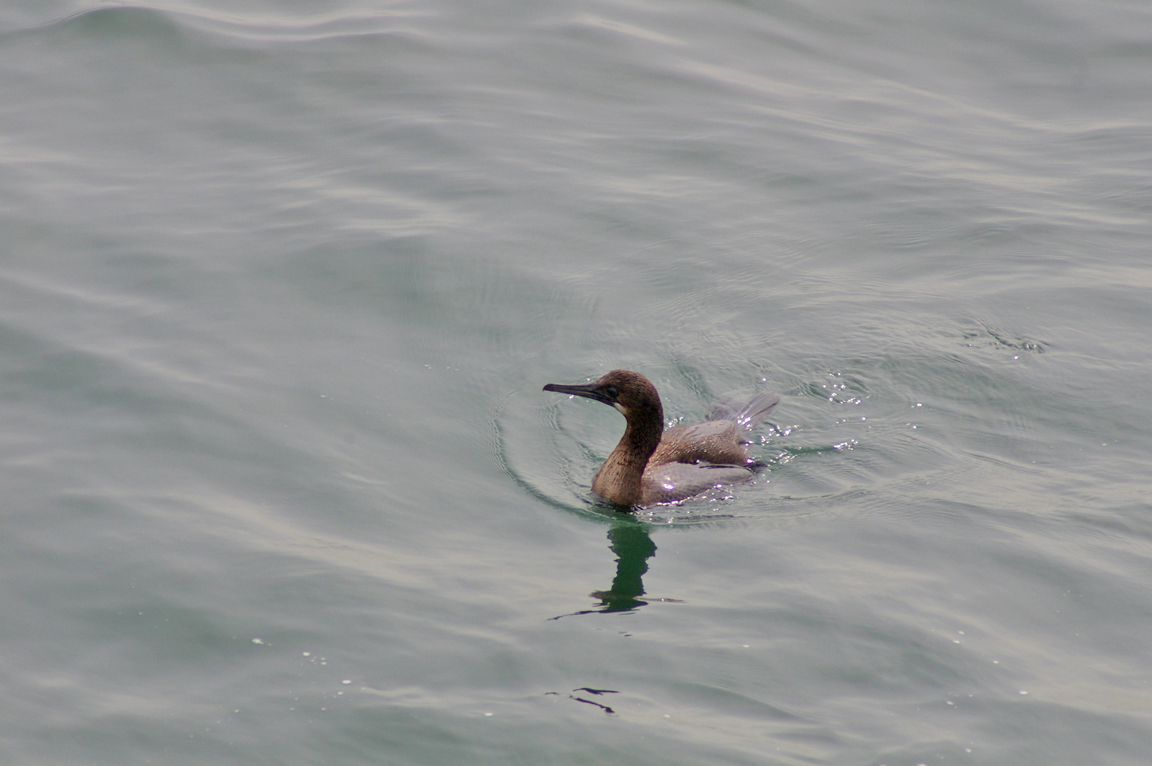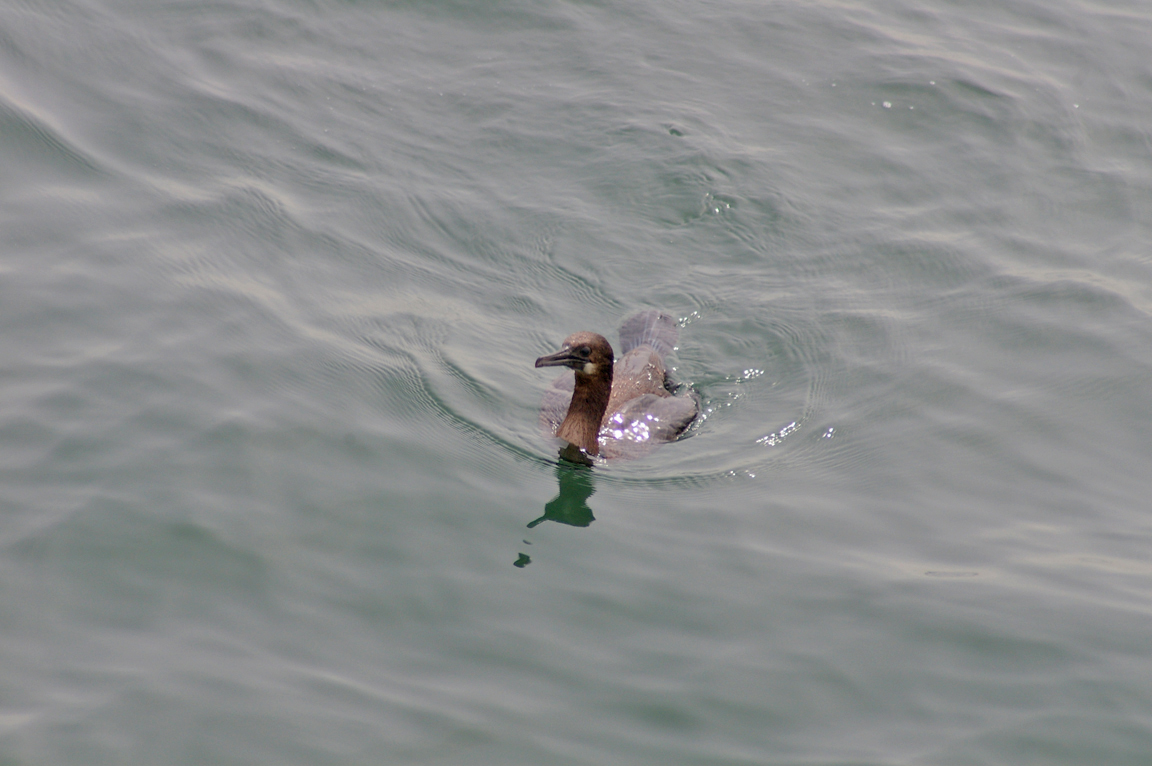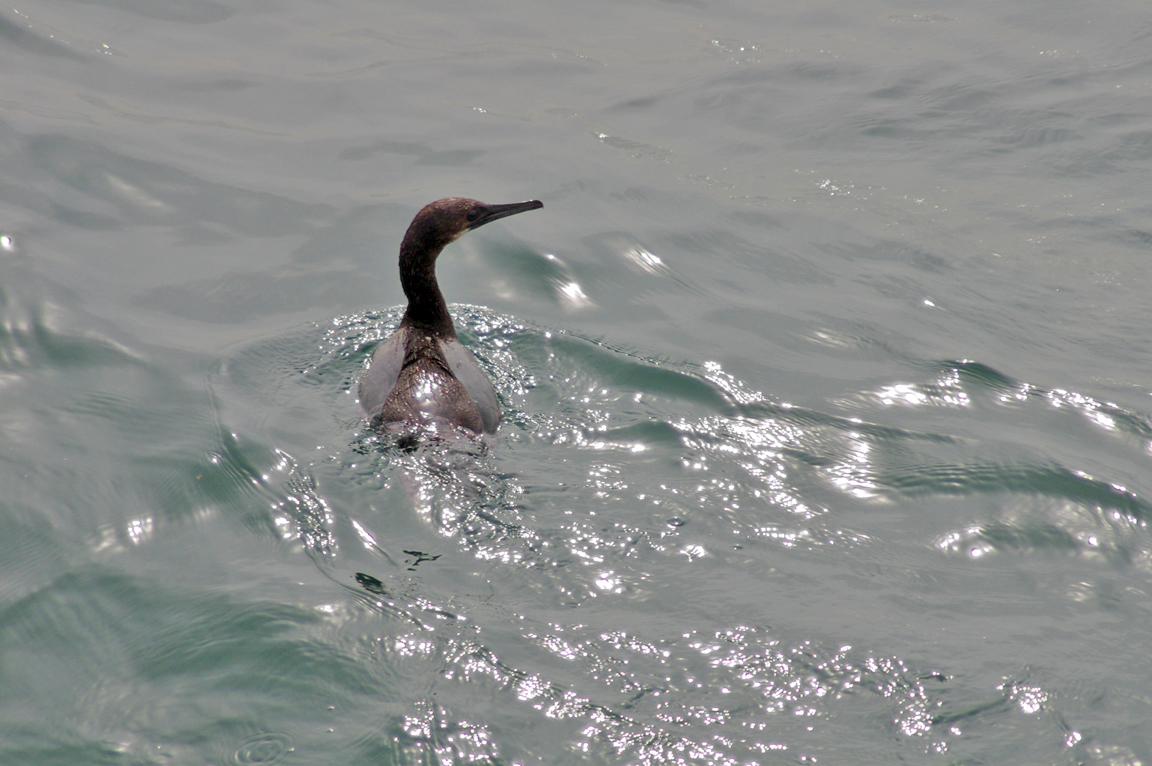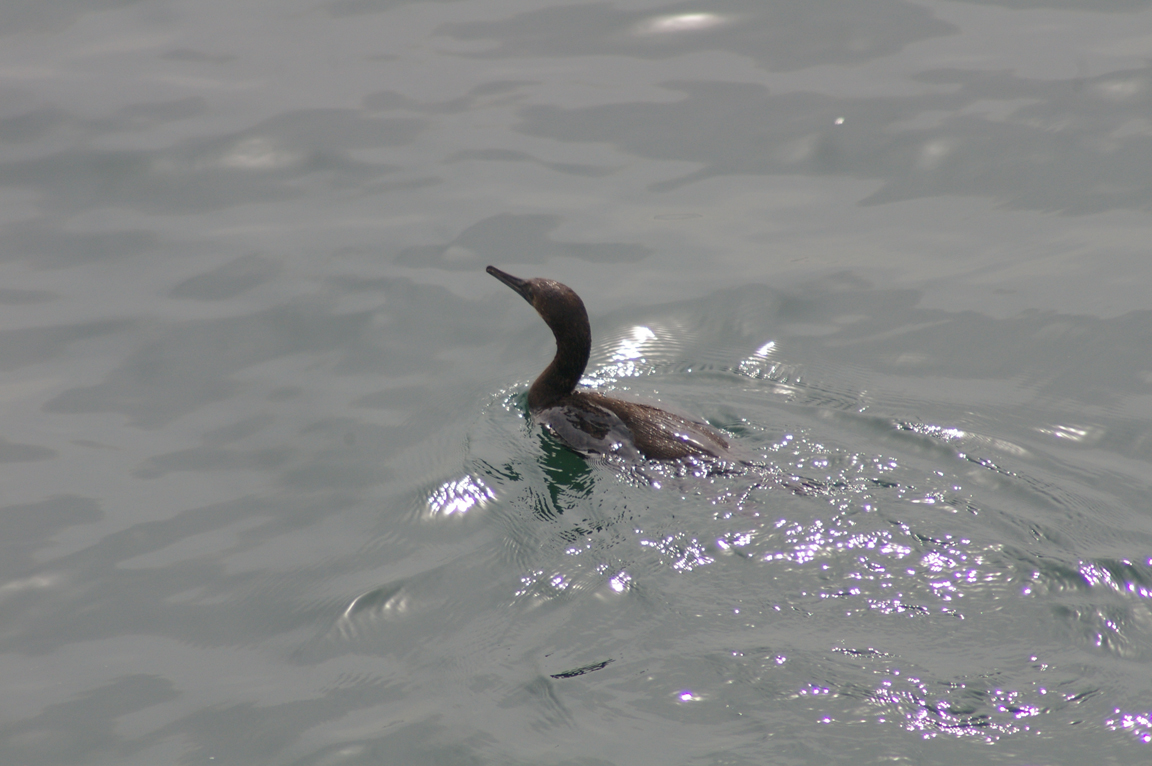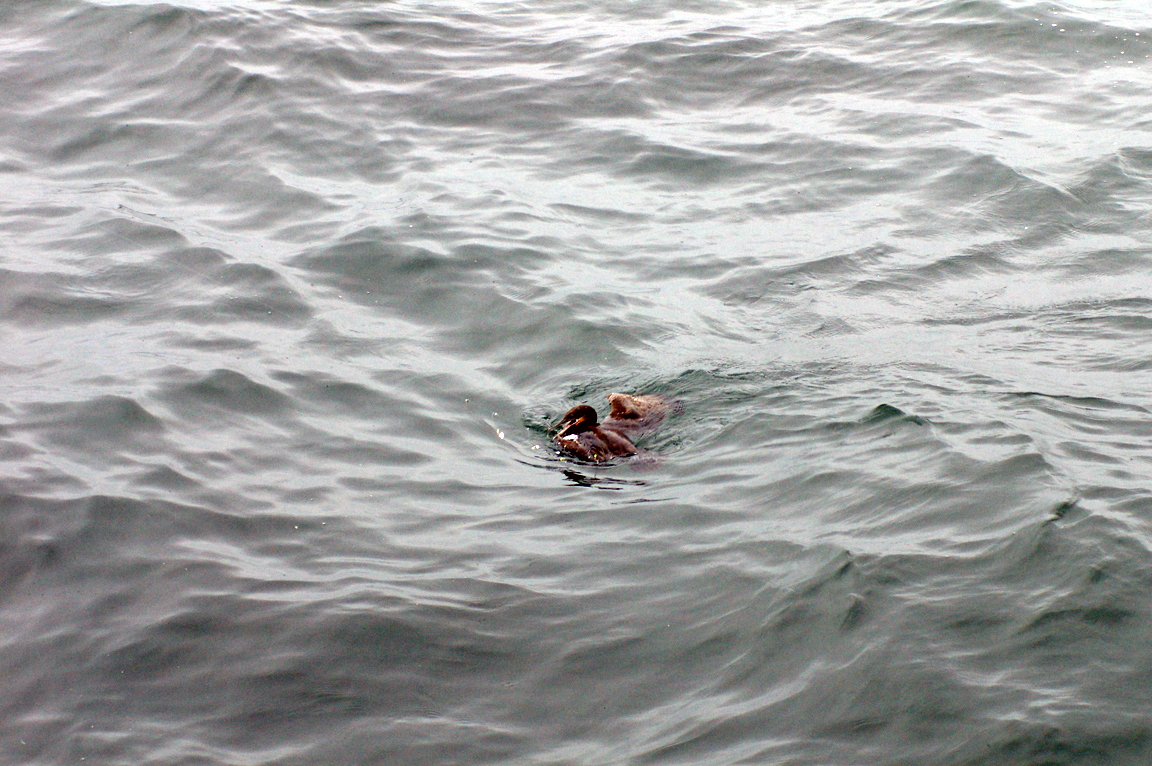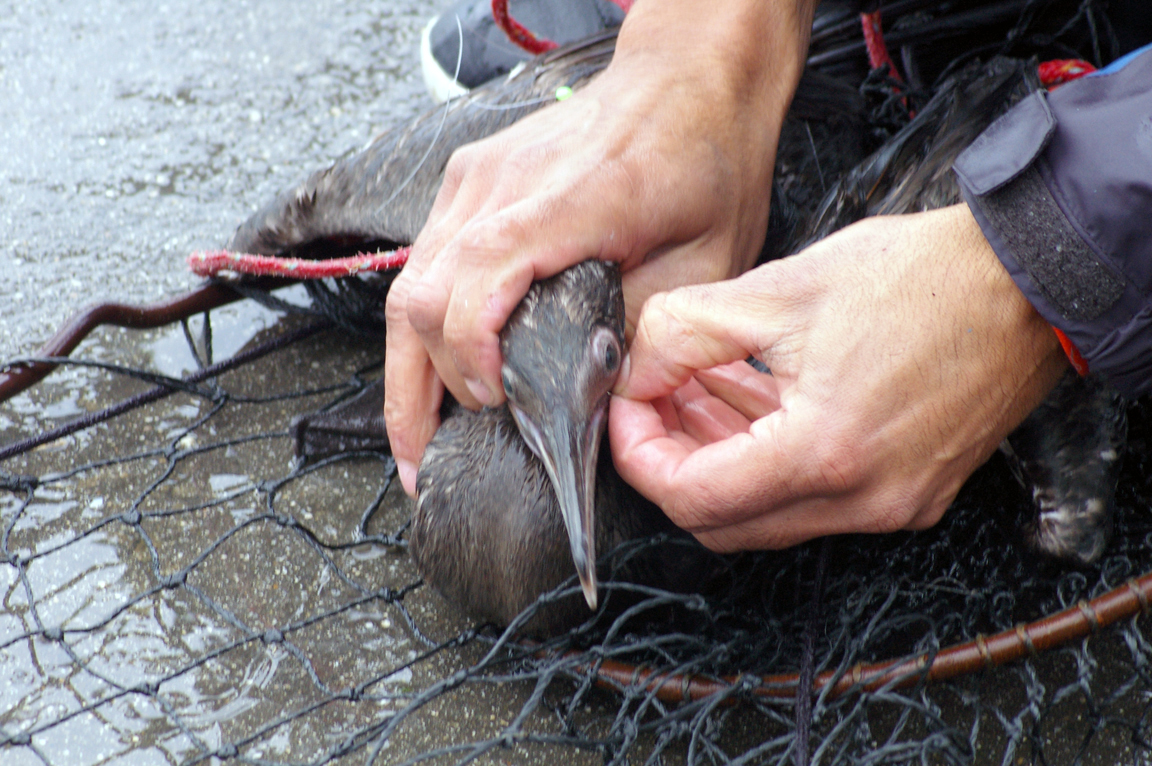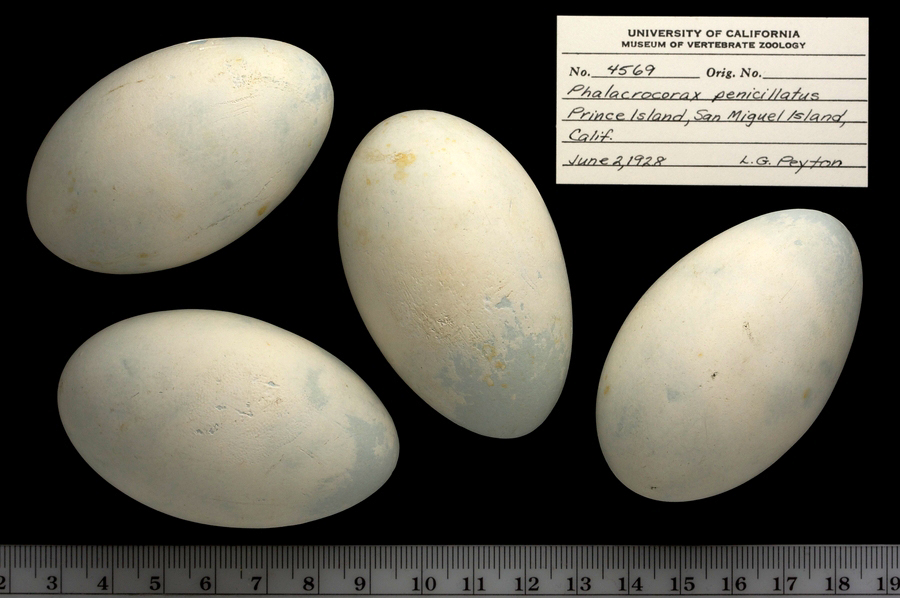|
|
|
 |
Brandt's Cormorant
|
| Phalacrocorax penicillatus | |
A large cormorant of the Pacific Coast, the Brandt's Cormorant is found only in marine environments.
Interesting Information
-
The Brandt's Cormorant is the least vocal of the North American cormorants at the nest. It makes sounds that are audible only from a few feet away.
-
In the main part of its range, from California to Washington, the Brandt's Cormorant is tied to the rich food sources associated with upwellings of the California Current. In the nonbreeding season, when the effects of this current diminish, populations redistribute along the coast, occurring where food is locally available.
Description
Adult Description
-
Size: 70-79 cm (28-31 in)
-
Wingspan: 108 cm (43 in)
-
Weight: 1400-2700 g (49.42-95.31 ounces)
-
Large, dark water bird.
-
Long body and long neck.
-
Medium-sized bill is blunt or hooked at tip.
-
Pale patch at base of bill.
-
Bill dark.
-
Relatively short tail.
-
Body brownish black, with green luster.
-
Breeding adult has bright blue skin under bill; gray in nonbreeding season.
-
Bill dark grayish.
-
Eyes green to turquoise.
-
Legs and feet black.
Sex Differences
Sexes similar;males slightly larger.
Immature
Juvenile brownish black with tan on underparts, lightest on lower breast where it forms a pale "V" at the border of breast and neck.
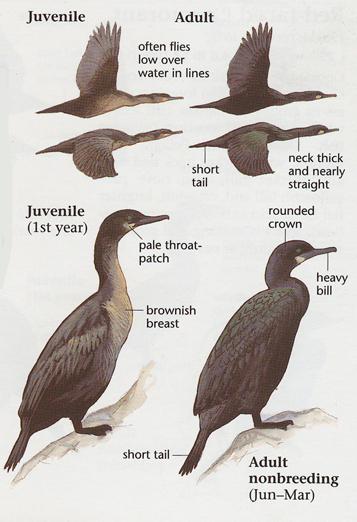
Photo taken from: The Sibley Field Guide by David Allen Sibley
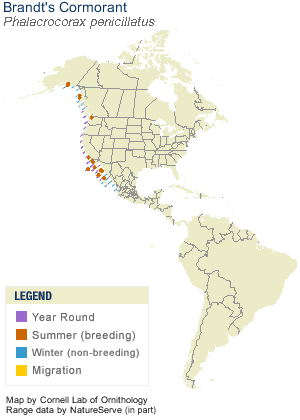
© 2003 Cornell Lab of Ornithology
|
Habitat |
|
Found in inshore coastal waters, especially areas with kelp beds; also large bays and occasionally estuaries or coastal lagoons. Breeding colonies located on gentle slopes on windward side of islands, or steep cliffs with ledges. |
|
Behavior |
|
Dives from the surface of the water and chases prey under water. Grabs fish in bill, without spearing it. |
|
Food |
|
Fish and some squid. |
Taxonomy
| Kingdom: | Animalia |
| Phylum: | Chordata |
| Subphylum: | Vertebrata |
| Class: | Aves |
| Order: | Suliformes |
| Family: | Phalacrocoracidae |
| Genus: | Phalacrocorax |
| Species: | Phalacrocorax penicillatus |
Similar Species |
Double-crested Cormorant
Pelagic Cormorant Anhinga Red-faced Cormorant Neotropic Cormorant Great Cormorant |
|
Bird Sound |
|
Low, hoarse and guttural croaks, growls, or gargles. |
|
Eggs look like this |
|
Photo taken from: ARCTOS Collaborative Collection Management Solution |
